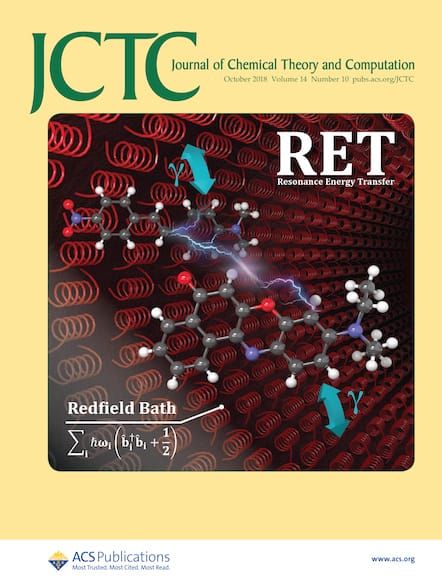Black-Box Simulations of Anharmonic Vibrational Chiroptical Spectra: Problems with Property Third Derivatives and the Solvent.
IF 5.5
1区 化学
Q2 CHEMISTRY, PHYSICAL
引用次数: 0
Abstract
Chiroptical methods, including vibrational circular dichroism (VCD) and Raman optical activity (ROA), reveal details about molecular structure. For three model molecules, α-pinene, camphor, and fenchone, we show that increased sensitivity of modern spectrometers makes it possible to record even fine spectral features, such as overtone and combination bands. However, understanding, interpretation, and simulation of them require relatively expensive computations, going beyond the harmonic approximation. For this purpose, vibrational perturbation theory at the second order (VPT2) has proven to provide an excellent price-performance balance. As it becomes more common, inconsistencies in electronic structure calculations, hidden by error compensation at the harmonic level, emerge. In particular, while trying to interpret the spectra, we found that the commonly used polarizable continuum models (PCM) of solvent may introduce erroneous perturbations to the higher derivatives of dipole moments and polarizabilities needed to simulate spectral intensities. We therefore analyze the experimental spectra on the basis of the simulations and explore parameters allowing for a "black-box" VPT2 application. In particular, explicit cavities used for the hydrogen atoms resulted in excessively large third derivatives of molecular polarizabilities and sometimes led to incorrect signs of ROA and VCD bands, even for fundamental transitions. This could be partially rectified by a combination of different approximation levels used for the calculation of different properties, or by using PCM cavities not explicitly adapted for hydrogen atoms. Under these conditions, VPT2 combined with a proper treatment of resonances appears as an excellent tool to simulate and understand the spectra, including the assignment of weak anharmonic bands.非调和振动热力谱的黑箱模拟:性质、三阶导数和溶剂问题。
包括振动圆二色性(VCD)和拉曼光学活性(ROA)在内的chiroptic方法揭示了分子结构的细节。对于α-蒎烯、樟脑和茴香这三种模型分子,我们发现现代光谱仪灵敏度的提高使得记录更精细的光谱特征(如泛音和组合波段)成为可能。然而,它们的理解、解释和模拟需要相对昂贵的计算,超出了谐波近似。为此,二阶振动摄动理论(VPT2)已被证明提供了良好的性价比平衡。随着它变得越来越普遍,电子结构计算中的不一致性,隐藏在谐波水平的误差补偿,出现。特别是,在试图解释光谱时,我们发现常用的溶剂极化连续统模型(PCM)可能会对模拟光谱强度所需的偶极矩和极化率的高导数引入错误的扰动。因此,我们在模拟的基础上分析了实验光谱,并探索了允许“黑箱”VPT2应用的参数。特别是,用于氢原子的显腔导致分子极化率的过大的三阶导数,有时甚至导致基本跃迁的ROA和VCD带的不正确符号。这可以通过用于计算不同性质的不同近似水平的组合来部分纠正,或者通过使用不明确适用于氢原子的PCM腔。在这些条件下,VPT2与适当的共振处理相结合,成为模拟和理解光谱的绝佳工具,包括弱非谐波带的分配。
本文章由计算机程序翻译,如有差异,请以英文原文为准。
求助全文
约1分钟内获得全文
求助全文
来源期刊

Journal of Chemical Theory and Computation
化学-物理:原子、分子和化学物理
CiteScore
9.90
自引率
16.40%
发文量
568
审稿时长
1 months
期刊介绍:
The Journal of Chemical Theory and Computation invites new and original contributions with the understanding that, if accepted, they will not be published elsewhere. Papers reporting new theories, methodology, and/or important applications in quantum electronic structure, molecular dynamics, and statistical mechanics are appropriate for submission to this Journal. Specific topics include advances in or applications of ab initio quantum mechanics, density functional theory, design and properties of new materials, surface science, Monte Carlo simulations, solvation models, QM/MM calculations, biomolecular structure prediction, and molecular dynamics in the broadest sense including gas-phase dynamics, ab initio dynamics, biomolecular dynamics, and protein folding. The Journal does not consider papers that are straightforward applications of known methods including DFT and molecular dynamics. The Journal favors submissions that include advances in theory or methodology with applications to compelling problems.
 求助内容:
求助内容: 应助结果提醒方式:
应助结果提醒方式:


